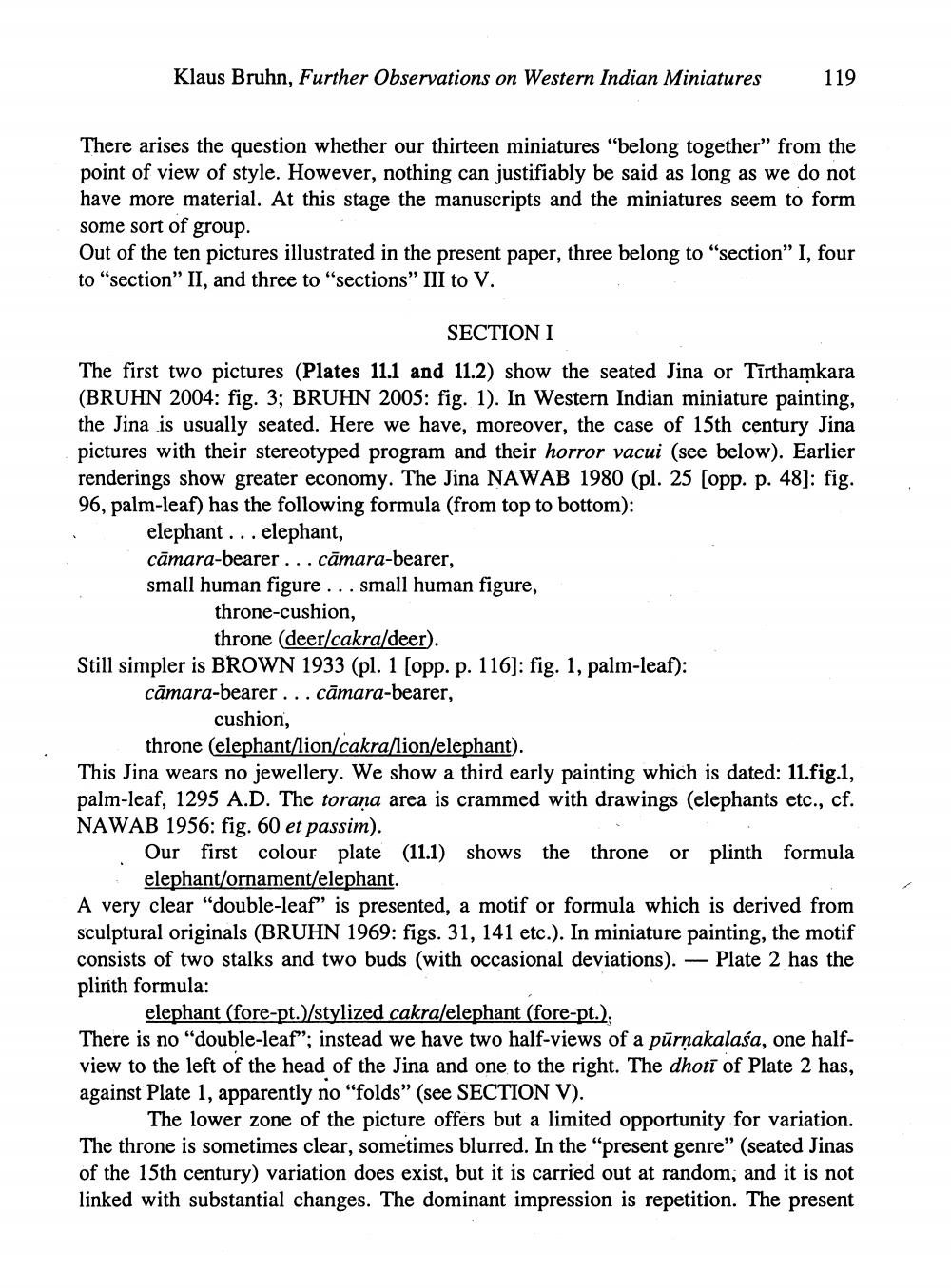________________
Klaus Bruhn, Further Observations on Western Indian Miniatures
There arises the question whether our thirteen miniatures "belong together" from the point of view of style. However, nothing can justifiably be said as long as we do not have more material. At this stage the manuscripts and the miniatures seem to form some sort of group.
Out of the ten pictures illustrated in the present paper, three belong to "section" I, four to "section" II, and three to "sections" III to V.
119
SECTION I
The first two pictures (Plates 11.1 and 11.2) show the seated Jina or Tīrthamkara (BRUHN 2004: fig. 3; BRUHN 2005: fig. 1). In Western Indian miniature painting, the Jina is usually seated. Here we have, moreover, the case of 15th century Jina pictures with their stereotyped program and their horror vacui (see below). Earlier renderings show greater economy. The Jina NAWAB 1980 (pl. 25 [opp. p. 48]: fig. 96, palm-leaf) has the following formula (from top to bottom):
elephant... elephant,
camara-bearer... camara-bearer,
small human figure... small human figure,
throne-cushion,
throne (deer/cakra/deer).
Still simpler is BROWN 1933 (pl. 1 [opp. p. 116]: fig. 1, palm-leaf):
camara-bearer... camara-bearer,
cushion,
throne (elephant/lion/cakra/lion/elephant).
This Jina wears no jewellery. We show a third early painting which is dated: 11.fig.1, palm-leaf, 1295 A.D. The torana area is crammed with drawings (elephants etc., cf. NAWAB 1956: fig. 60 et passim).
Our first colour plate (11.1) shows the throne or plinth formula elephant/ornament/elephant.
A very clear "double-leaf"" is presented, a motif or formula which is derived from sculptural originals (BRUHN 1969: figs. 31, 141 etc.). In miniature painting, the motif consists of two stalks and two buds (with occasional deviations). Plate 2 has the
plinth formula:
elephant (fore-pt.)/stylized cakra/elephant (fore-pt.).
There is no "double-leaf"; instead we have two half-views of a pūrṇakalasa, one halfview to the left of the head of the Jina and one to the right. The dhoti of Plate 2 has, against Plate 1, apparently no "folds" (see SECTION V).
The lower zone of the picture offers but a limited opportunity for variation. The throne is sometimes clear, sometimes blurred. In the "present genre" (seated Jinas of the 15th century) variation does exist, but it is carried out at random, and it is not linked with substantial changes. The dominant impression is repetition. The present




